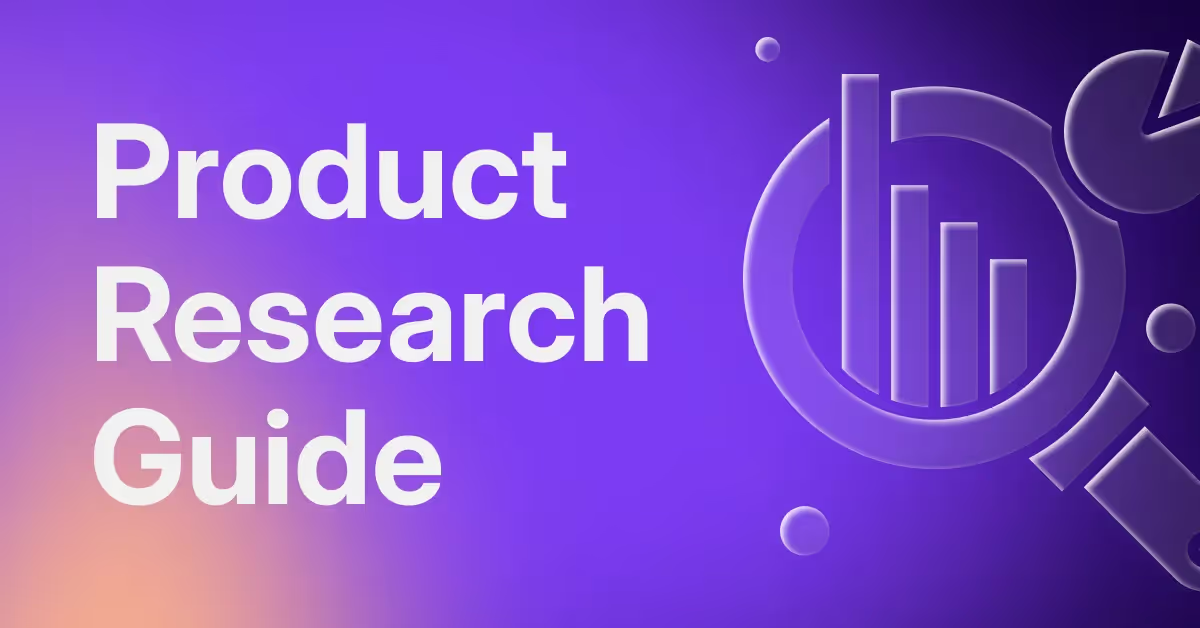Any B2B or B2C company should regularly conduct product feedback surveys. This helps stay on top of user experience and find all opportunities for product development.
In this blog post, we'll go through eight of the most popular product survey templates available in Survicate. We’ll discuss the questions our experts decided to include in the default version of these surveys.
Reading this guide should help you understand the why behind our design. You’ll also make better-informed decisions if you decide to create a survey from scratch.
.avif)
What questions to ask in a product feedback survey?
The questions you ask in a product survey will depend on what you try to find out. I’ll begin the description of each of these templates with its goal.
These surveys will be most beneficial for a product manager.
Product testing survey
Goal: to evaluate a product before the launch based on the target audience’s feedback.
A product testing survey will provide data to test your assumptions and determine your business and marketing strategy. The sooner you ask for feedback on a product idea, the less guesswork (and waste of resources) goes into your process.
The kind of questions you ask in a product testing survey will depend on your product type, industry, and the stage of the product lifecycle. This survey is helpful for new products and product update ideas.
Ask the following questions in your product testing survey:
- How would you rate your first reaction to our new product?
- How would you rate the overall quality of the product?
- If the product was available now, would you buy it?
The answers to these types of questions are not binding, but they give you a sense of whether the testers had a positive or negative impression of your product at first glance. It is a good indicator of whether a trial period can transform users into paying customers.
- Taking similar products into account, what price would you be ready to pay for this product?
A product testing survey may also include a pricing question. The one provided above will automatically give you an insight into how you stack against competitors your testers recognize. It may also be a good idea to ask about particular brands respondents have used.
- Will this product help you solve your problems?
This is another question that will feed you details on how you compare to your competitors. You’ll get a sense of whether the features you developed are a good market fit and meet customers’ needs.
- How likely is it that you would recommend this product to your friends or colleagues?
This NPS question will help you understand whether the first impression of your product kindles a sense of loyalty in your customers.
- What do you like/dislike the most about this product?
Leave this question open-ended but look for trends. If a particular feature is highly requested, implementing it will be a quick win.
- How important are the following features to you?
These questions will let you know what users value most about your product. It generates excellent data for your product marketing strategy team.
Product experience survey
Goal: measure customer satisfaction with critical aspects of a product.
A product experience survey gathers data on how customers use the app, what they value, and what they want to change.
There is a difference between a product satisfaction survey and a customer satisfaction survey. The former concentrates on how users experience the product only, not the customer service, website, pricing, etc.
A product experience survey should contain questions such as:
- On a scale of [...] to [...], how satisfied are you with the product?
This question gives you a bird’s eye view of the satisfaction of your product. Segmenting your audience and triggering this kind of survey at specific events is a good idea.
- What do you like the most about the product?
The responses to these questions will help you discover which features users find valuable and which ones may be redundant.
- Why do you use the product?
Understanding the “why” behind your customers' choices can help you tailor your product to those needs and develop creative marketing strategies.
- How would you describe it to the people you know?
- How likely are you to recommend the product to the people you know?
These questions gauge customer loyalty and its perception outside of your team.
- Is there anything you'd change about the product?
This question helps uncover ideas on how to improve the user experience (UX) of your app or product.
- Have you ever had any problems with the product?
Discover your customers’ pain points for quick wins.
- Does the product work as you’d expect it to?
This helps you test your MVP with the target audience.
Software evaluation survey
Goal: assess how critical parts of your software contribute to its success.
A software evaluation survey will help you drive development in the right direction. It provides insights into general customer satisfaction, your product’s ease of use, design attractiveness, and security.
A software evaluation survey is most effective when it contains questions like these:
- How satisfied are you with the software? Do you have any thoughts on how to improve this product?
- Is there anything that doesn’t work the way it should?
- How satisfied are you with the safety of our product? Do you feel safe sharing your personal information with us? What could we do to make you feel safer?
- How satisfied are you with the ability to integrate other software with this software? What kind of integrations would you like to see?
For a complete list of software evaluation questions, check out our template above.
These insights will instruct you on product stability, missed potential bugs, and whether your product is still in line with customer expectations. Run the survey regularly throughout the product lifecycle to maintain customer loyalty and satisfaction.
Customer onboarding feedback survey
Goal: to learn how easy users find it to learn, adapt, and use essential features of your product or service. The word “onboarding” has not been used in any questions, as customers may be unfamiliar with the term.
An onboarding survey provides information about whether the flow you’ve designed is good enough to:
- retain customers
- inspire them to purchase more expensive tiers of your product
- transform (not paying) users into customers
Onboarding aims to introduce your users to crucial functionalities and nurture them into realizing your product’s potential. An adequate onboarding flow increases the customer lifetime value.
A customer onboarding feedback survey contains questions such as:
- How has your experience with using the app been so far?
Respondents answer this CSAT question on a scale of 1-5 or 1-7. It gives a general overview of customer satisfaction with your product.
- Do you feel you make the most of the app? Are there any features you don't understand?
- Is there anything you cannot do with the app that you wish you could?
These open-ended questions let you see whether the app has the potential to meet user expectations.
They also ask about missing features that customers may have seen in competitors’ products or that they have come up with. This can be a treasure trove of fresh ideas for your product roadmap.
- On a scale 0-10, how likely are you to recommend the app?
This NPS question helps gauge customers' loyalty and readiness to recommend.
- What is the biggest problem the app solves for you?
- Which features are most interesting to you?
The last two questions can give you ideas on how to market your product.
Usability testing survey
Goal: assess your product’s ease of use.
Survicate templates use the System Usability Scale to test your product’s ease of use. SUS surveys should be 10 questions long with 5-point Likert scale questions. Answers range from “strongly disagree” to “strongly agree.”
A usability survey measures your customer experience and is a good indicator of ROI.
SUS survey questions should ask whether respondents agree with the following statements:
- I think I'd like to use this [app/software/tool] frequently.
This question can be answered with a scale. Your best customers will declare using your tool every day. This is good, as it proves it’s essential to them. If customers neglect to use your tool regularly, you should make it more appealing.
- I think I'd need the support of a technical person to be able to use this [app/software/tool].
Users are unlikely to use complex tools frequently.
- I found the [app/software/tool] unnecessarily complex.
This question can be followed by an open-ended question for respondents to add more details.
- I thought the [app/software/tool] was easy to use.
- I found the various functions in this [app/software/tool] were well integrated.
The second question is particular and can help you decide whether you need to work on your tool’s compatibility.
Product pricing survey
Goal: to determine how your audience values your product and eliminate the guesswork on what the optimal price is. You can use this survey for both new and established products.
The pricing of a product is at the core of the customers’ decision-making process. It impacts not only whether the product will be purchased but also general customer satisfaction and the ability to retain customers.
Combine this survey with calculations and competitor research to determine your subscription plans' most appropriate pricing range. The answers can also reveal your most attractive features.
A product pricing survey will inform you how the service fits your clients’ budgets.
Include the following questions in your product pricing survey:
- How would you rate the value for money of our product/your pricing plan?
This question will inform you whether or not customers believe your pricing is too steep.
- What’s the maximum price you would pay for the product/your pricing plan?
Customers want to get the best price for the product. But insights from this question can help you figure out pricing tiers between different subscription plans.
- How would you rate the value for money of our product/your pricing plan?
- Would an increase in prices make you switch to your competitors?
- How does our pricing compare to other products in this category?
These questions will give you insights into how your pricing compares to that of your direct and indirect competitors.
- Is there anything stopping you from purchasing our product?
The last question is designed for potential customers rather than established ones. Gather great ideas for updates that will help you upsell directly to your audience.
B2B customer satisfaction survey
Goal: collect B2B-specific data on customer satisfaction to prevent churn, boost loyalty, and retain customers.
Customer satisfaction is usually calculated with metrics like NPS, CSAT, and CES. The questions in the following template have been optimized for higher-stake B2B transactions.
- How satisfied are you with our product/services?
CSAT questions rate your customers' general satisfaction with your brand and product.
- How likely are you to recommend our product/services to your colleagues?
This NPS question will let you know how likely you will retain your customers.
- How easy is it to use our product/services?
It’s a good idea to ensure your customer journey is as streamlined as possible. Anytime a customer encounters a blocker, they may decide to abandon the product or switch to a competitor.
- How satisfied are you with the following features (e.g., security, customer service, reliability, value for money, interface)?
This question can get you specific data on critical aspects of your product or service. Ask about one element at a time to avoid survey response bias.
- If you could change one thing about our product/service, what would it be?
- If you could add one thing to improve our product/service, what would it be?
These questions are great for developing ideas for your next update and prioritizing the product roadmap.
- Is there anything you’d like to share with us?
You may want to conclude with an open-ended question about your customer’s thoughts. Some respondents will leave this blank. But those who fill it in usually leave valuable feedback.
Product market fit survey
Goal: to aid product research and ensure your product satisfies strong market demand.
This survey is not only beneficial for new products. Established brands can use the insights to make sure they
- are scaling safely
- prioritize the roadmap optimally
- know their product’s biggest strengths
- created a product that’s adopted well
The most crucial question in this product-market fit survey was developed by Sean Ellis and states:
- How would you feel if you could no longer use [our product]?
It is usually answered on a 5-point scale from “very disappointed” to “not disappointed.” The benchmark is generally considered to be around 40% of customers who would be “very disappointed” if they could no longer use your product.
To monitor your product/market fit metric, you should also include the following open-ended questions in your survey:
- What type of people do you think would most benefit from [our product]?
Your customers will know best what roles they play in their company and which teams/team members get the most use out of your product.
- What is the main benefit you receive from [our product]?
This would be your USP or key selling point. You’d be surprised how many products found their customers use them for purposes other than what they initially planned.r. Once you know how your users are using your product, you can market it and tailor the roadmap much more efficiently.
- How can we improve [our product] for you?
This question is an excellent source of information to help you decide which products or features you should spend the most resources on.
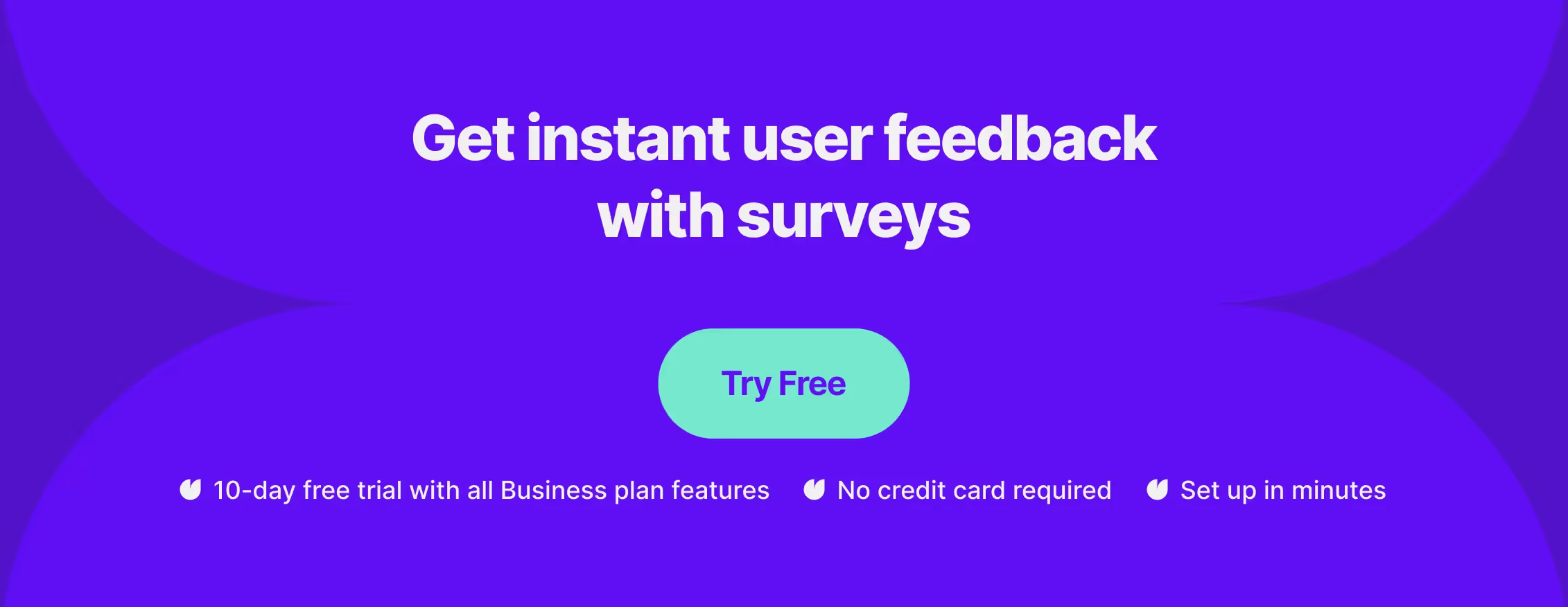
Build your product feedback survey questions with Survicate
Specialists designed Survicate templates to make them optimized for:
- best response rate
- best completion rate
- lack of response bias
- minimizing survey fatigue
- the most favorable ratio between time spent filling out a survey and the amount and value of data gathered
We considered all survey best practices, such as a mixture of question types, skip logic, and simplicity of language.
All Survicate templates are customizable. You can add, remove, or modify questions and style the survey according to your own branding. You can also start from scratch and pick and choose the questions you think will be most valuable to you.
Survicate also offers a gallery to keep all your surveys neatly organized. You can quickly analyze all responses within the dashboard that generates visual and CSV reports in real-time. Take advantage of our many native integrations to automate the process of feedback collecting and closing the loop.
Sign up to check our 10-day free trial of our Best plan with access to 40+ native integrations, multilingual surveys, and our proprietary Insights Hub and Research Assistant.








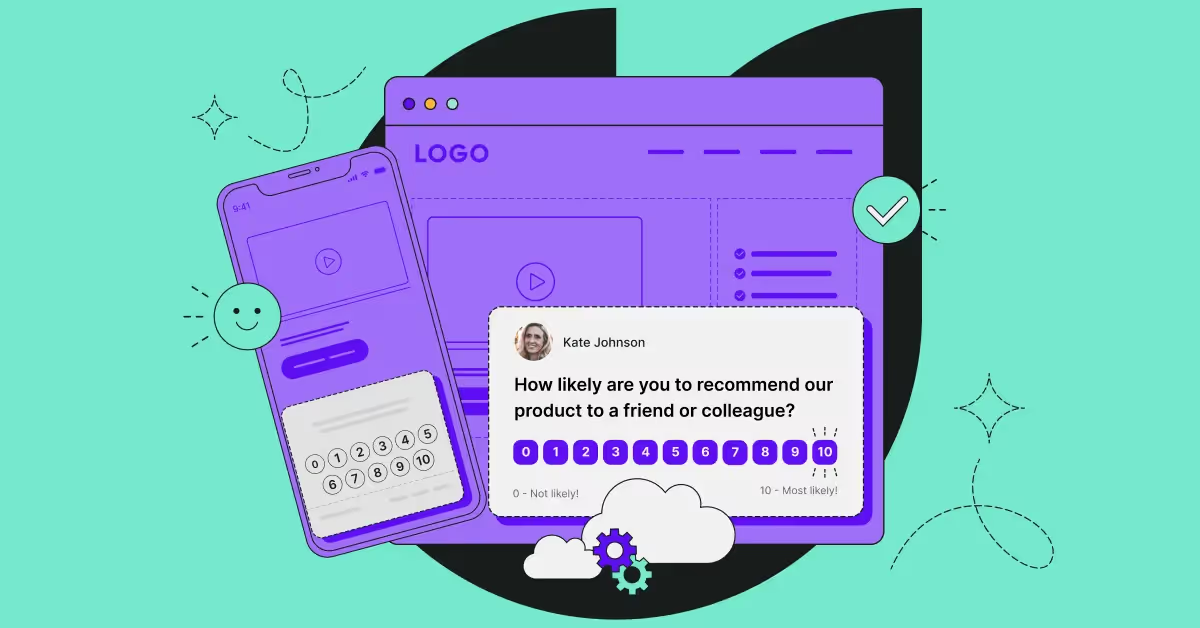
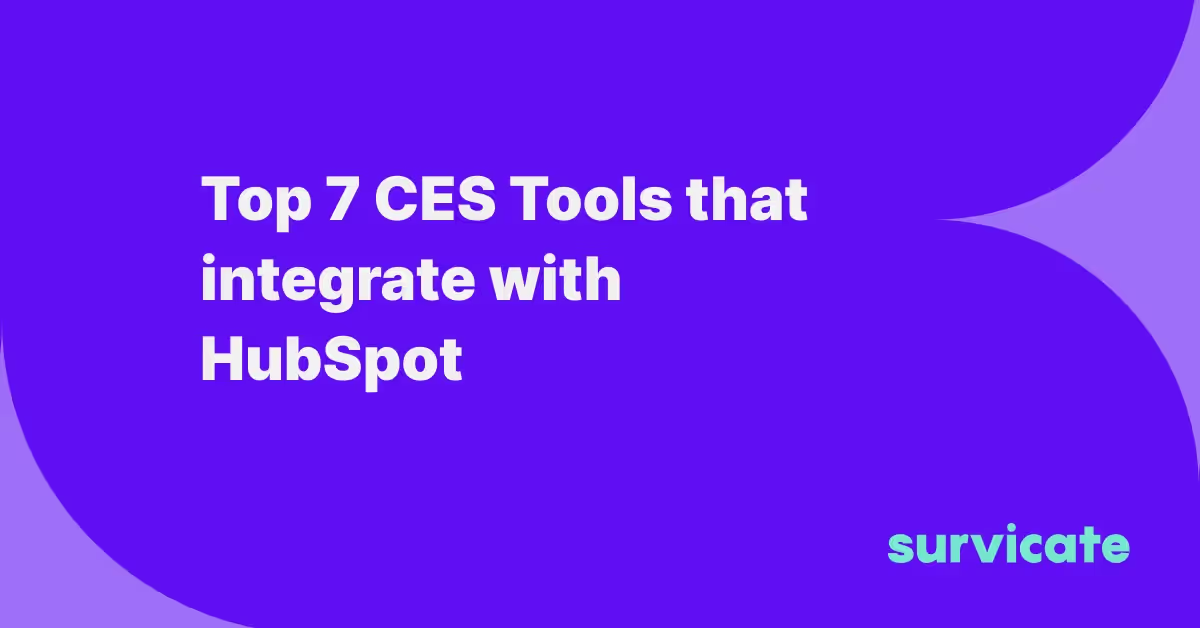

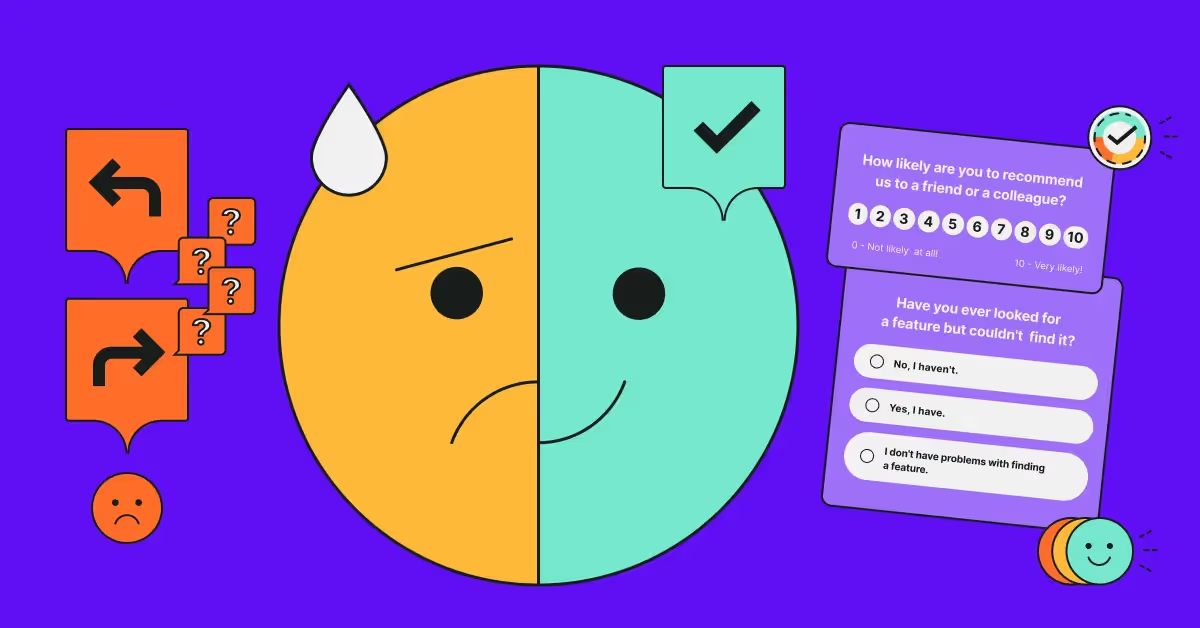
.avif)
.avif)
